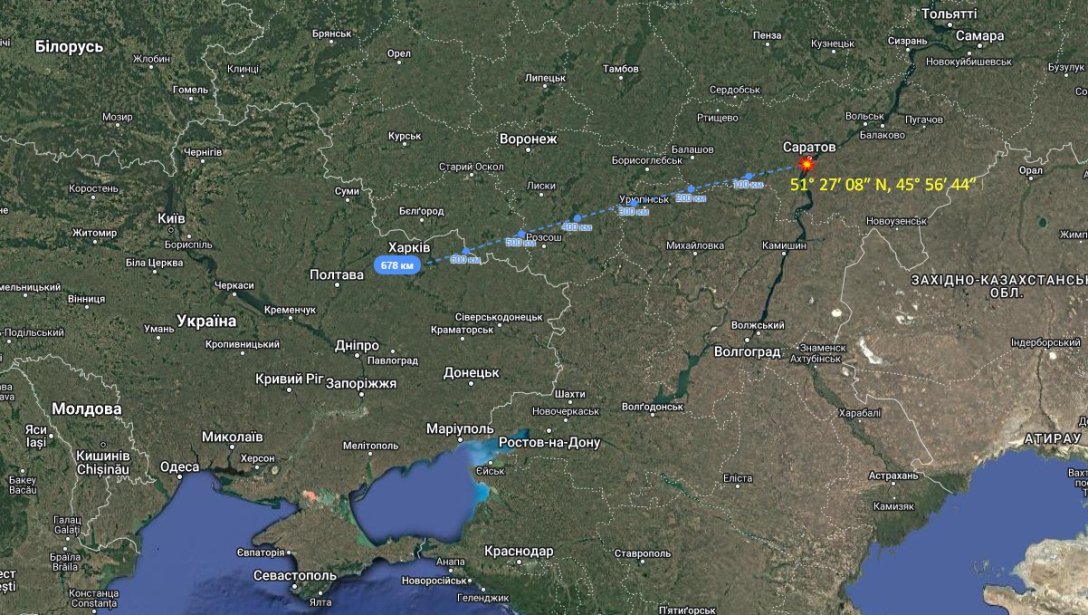Fuel shortages for the Tu-95 and Tu-160: Satellite images reveal the aftermath of the strike on the Saratov oil refinery (photos included).
The Saratov Oil Refinery (NPP), which was struck by the Defense Forces on the night of January 14, lost at least two fuel tanks. Satellite images reveal charred, burned areas where massive white tanks used to stand. The consequences of the Ukrainian attack on this military facility were reported by the project "Schemes" on their Telegram channel.
On the evening of January 14, the "Schemes" channel published a post detailing the aftermath of the strikes on the Saratov NPP. High-resolution photos of strategic sites were obtained from Planet Labs. One image, taken on December 7, shows about 23 large white tanks. The second photo, taken on January 14, reveals blackened burned spots instead of two tanks. The report summarized that the Russians likely lost at least two fuel tanks.


"Schemes" noted that near the NPP is the military airbase "Engels-2," from which Tu-95 and Tu-160 bombers regularly take off to strike Ukraine. Meanwhile, media outlet NV wrote that this oil refinery produces aviation kerosene, which is fuel for aircraft, among other products.
Satellite photos show the exact coordinates of the area reached by Ukraine — 51° 27′ 08″ N, 45° 56′ 44″ E. The specified location is situated nearly 700 km from the Ukrainian border.

Strike on Russia — details of the Ukrainian attack
It should be noted that on the night of January 13 to 14, Russian governors overseeing regions near Ukraine warned of the threat of Ukrainian air attacks. In the evening, the first footage of flashes in the vicinity of the Bryansk chemical plant in the settlement of Seltsu appeared online. Local residents counted between 10 to 30 strikes and claimed that the Defense Forces used ATACMS missiles.
During the night, Russians reported explosions in several regions of Russia near strategic sites. On the morning of January 14, analysts identified the facilities that could have been targeted: the Alexinsky Chemical Plant in the Tula region, ammunition depots at the "Engels-2" airfield (which stored FABs, KABs, cruise missiles), the NPP in the Saratov region, and the Bryansk chemical plant (which produces shells for the "Grad," "Tornado-S," "Smerch" multiple rocket launchers, and explosive aerial bombs), as well as "Kazan Orgsintez" in the Republic of Tatarstan (producing products for armored personnel carriers and infantry fighting vehicles).
Meanwhile, based on reports from Russian media, it was established that explosions occurred in 11 regions of Russia. In particular, loud sounds were also reported in the Rostov and Tula regions. The Ukrainian command confirmed the successful targeting of military objectives on Russian territory.